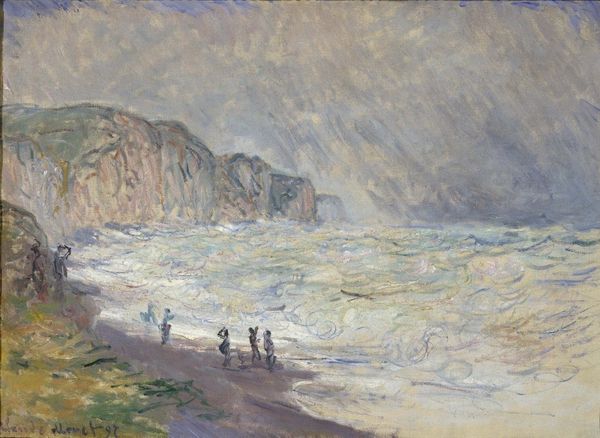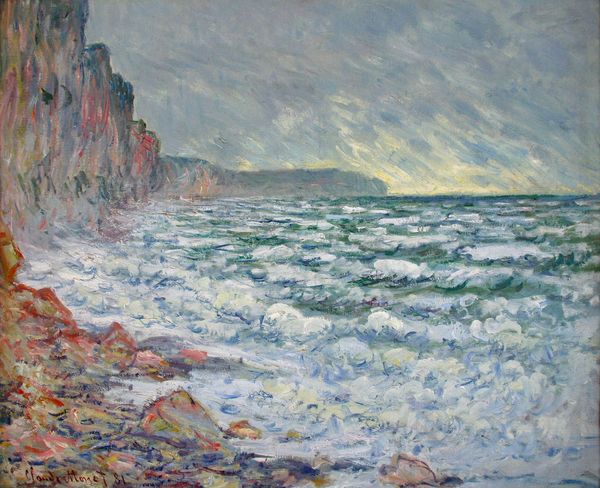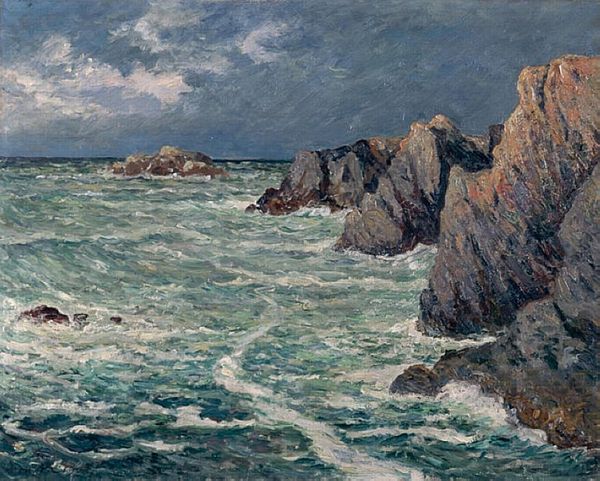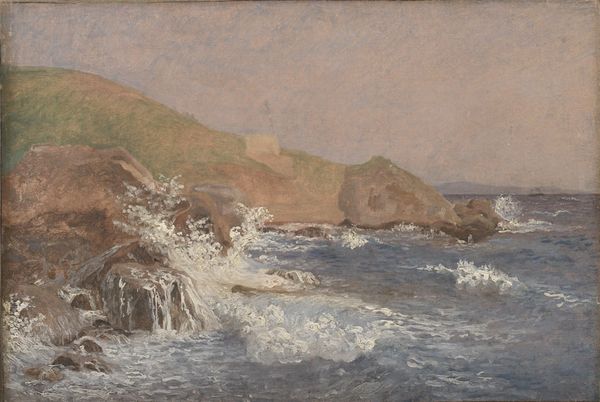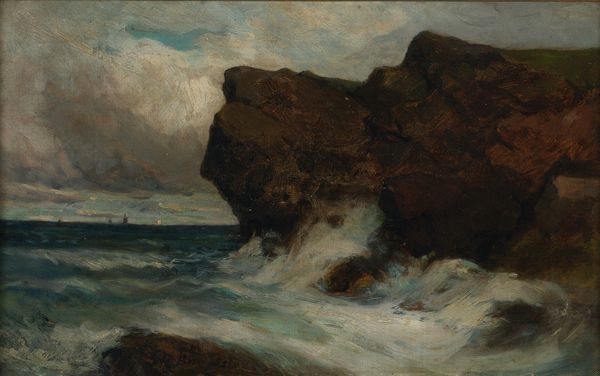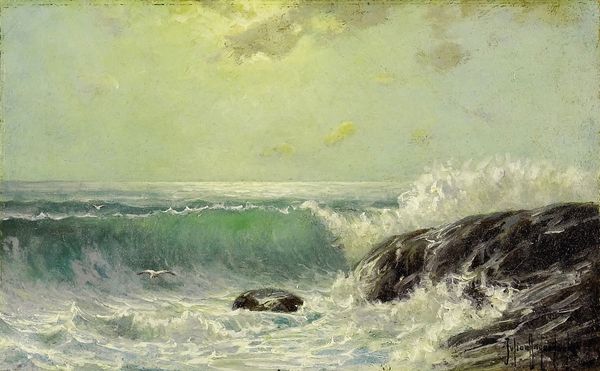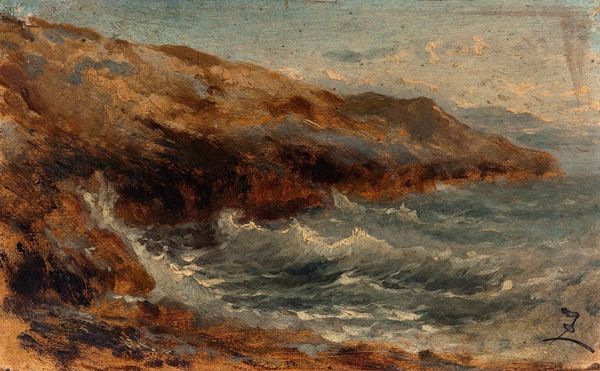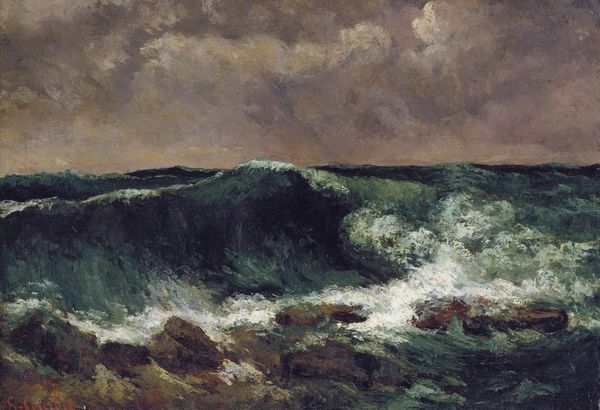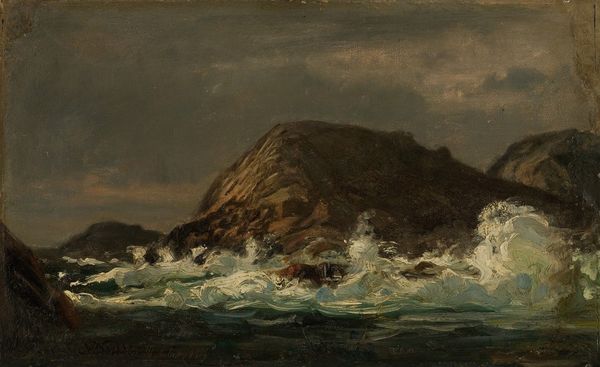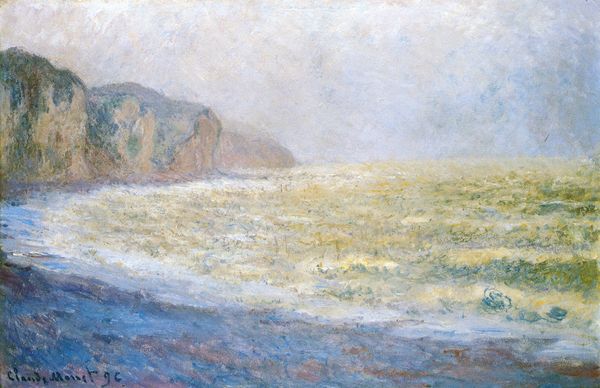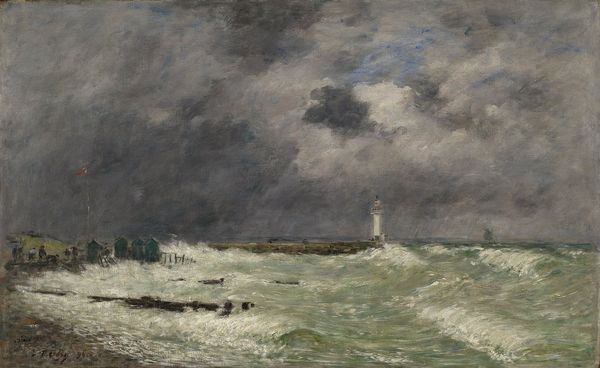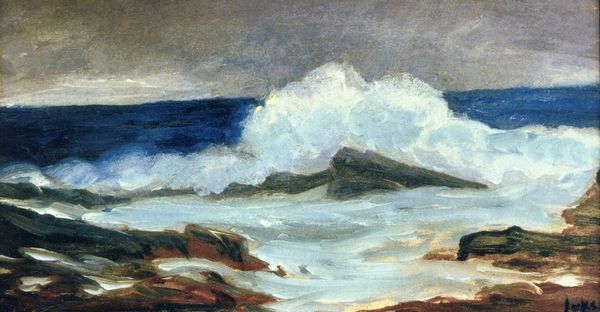
plein-air, oil-paint
#
impressionism
#
plein-air
#
oil-paint
#
landscape
#
impressionist landscape
#
figuration
#
oil painting
#
realism
Copyright: Public Domain: Artvee
Claude Monet painted ‘Rough Weather at Étretat’ with oil on canvas to capture the transient effects of light and atmosphere. The image conveys a sense of awe and vulnerability in the face of nature's power. Painted in France during the late 19th century, this work reflects several cultural shifts. With increasing industrialization, the Romantics searched for solace in nature. The rise of the middle class and tourism made coastal scenes like Étretat popular subjects. Monet was at the forefront of the avant-garde Impressionist movement, and he broke from academic traditions by painting outdoors, en plein air, to record his direct sensory experience. The seemingly objective rendering of nature also reveals changing social values. The tiny figures at the bottom highlight the sublime power of nature while implying the growing insignificance of humanity. By studying artists' letters, exhibition reviews, and the writings of contemporary critics, we can understand better the complex interplay between art and society, and the way that art can reflect and shape our understanding of the world.
Comments
No comments
Be the first to comment and join the conversation on the ultimate creative platform.
